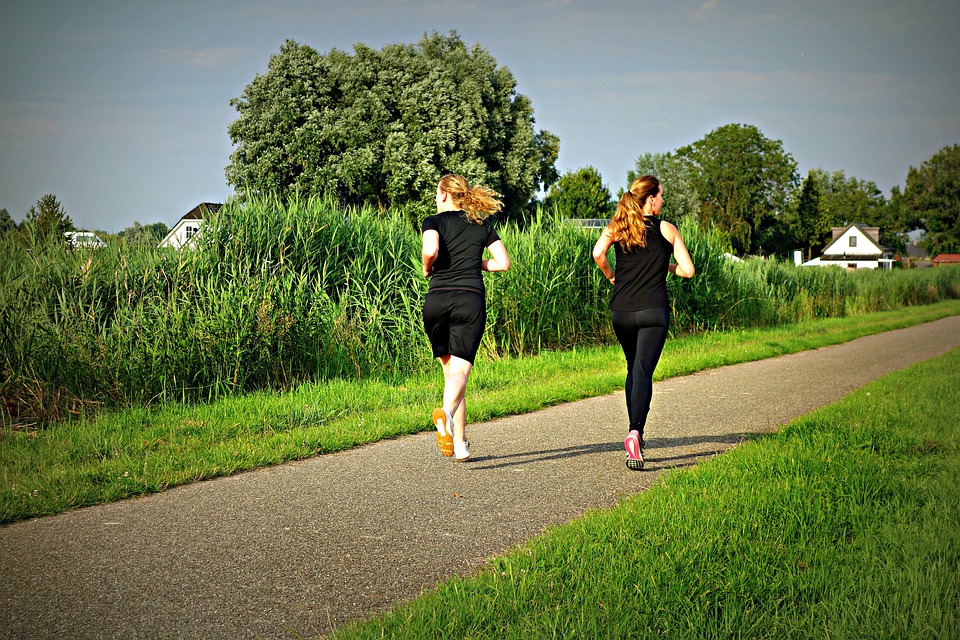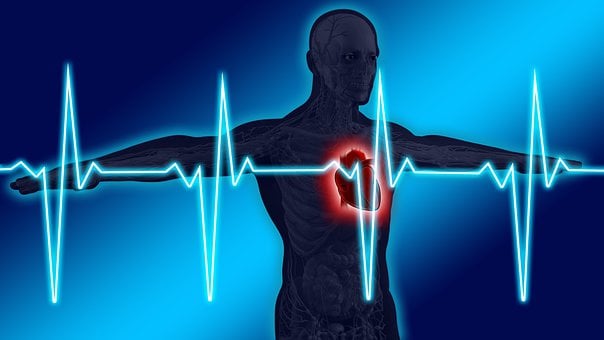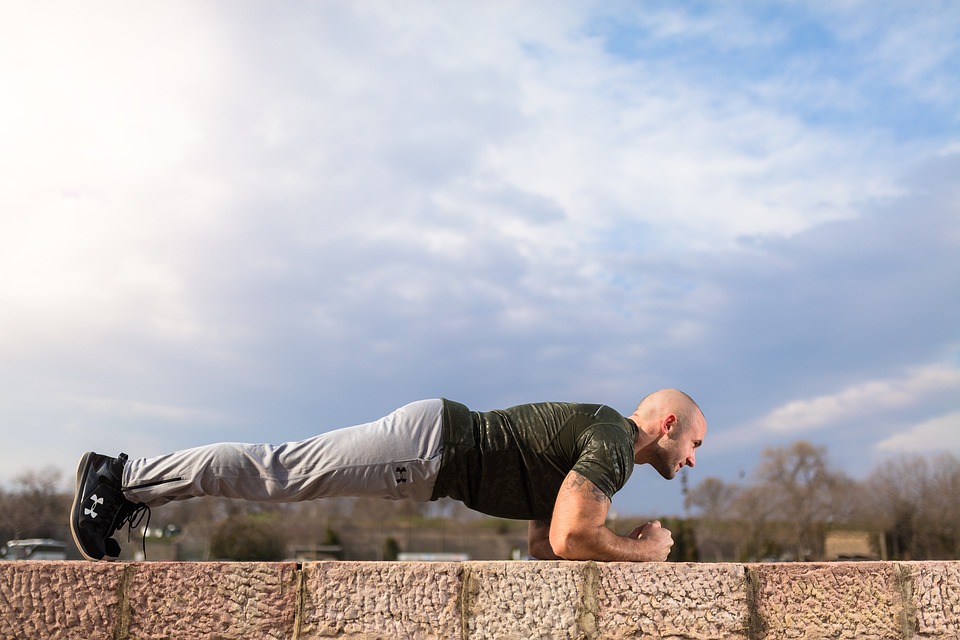
What does running do to your body when you first start running
Although you may feel out of breath and your heart rate will increase, do not worry as this is normal.
But what exactly is happening?
Each breath of oxygen that comes into your lungs is pumped by your heart to all the muscles in your body. The oxygen and blood flow is what provides energy and why you feel fatigued so quickly when you first start. Your body is not yet efficient at this process.
At first, you may not feel good and your stomach may be upset. This is because it is working hard to break down different energy sources to power your muscles.
ATP is an energy source that is stored in the form of glycogen in muscles and blood. However, the body can only store a small amount of it, so when you start running, the body needs to produce more.
This is why endurance runners will often talk about the need for carbohydrates.
Your body will need more oxygen
Your body needs extra oxygen to produce ATP. As a result, your breathing will become quicker and shallower.
When you start to run, your body will send more blood to your muscles and less to your digestive system. This is one of the reasons that runners may experience side stitches or runner’s diarrhea.
At this point, your body is burning calories, lactic acid is accumulating in your muscles, and your core body temperature is rising.
Other things you may notice:
- Your face has started turning red. It’s caused by blood being diverted closer to the skin to be cooled.
- You’ll probably be sweating heavily, which is also to help you cool.
- Heart rate continues to rise because the body will feel like it’s working harder the longer you go.
- Muscles will start to feel tight or heavy, this is simply because they need time to adapt.
What happens to your body as you continue running
When you gradually feel like you are in better shape, you will breathe more heavily, sweat, and generate ATP from glucose. Your body will reach a steady state.
If you’re just starting to run, your body will be less efficient and lactic acid will start to accumulate faster than your body can clear it. This is the point when running starts to hurt because of muscle fatigue and fewer muscle contractions.
Increasing your activity gradually over time is the best way to improve your overall fitness.
While you are continuing to run, you will start to notice many different benefits.
How often do you need to run for benefits?
In order to see significant results, you must run for a minimum of 30 minutes on three separate occasions throughout the week. And, to clarify, run/walk intervals do count as running.
If you put in this much work and determination, you can expect to see some improvement in 3 to 4 weeks, and more significant changes after 6 weeks.
You don’t need to wait a long time to start noticing the benefits of running.
You will see some benefits of running within 30 minutes, including an improved mood and reduced depression.
Let’s examine the benefits of running in more depth.
What does regular running do to the female body?
The Mayo Clinic has found that running just six miles a week can add up to an extra three to six years to your life. Not only that, but there are plenty of benefits to running for women specifically.
- High-intensity anaerobic running is one of the most potent stimulators of growth hormones. Growth hormone contributes to stronger muscles which enhance performance. By frequent running and proper training, you will gain strength and speed which is similar to the effects produced by steroids.
- Running helps to burn calories. Fast running burns more calories than slow running. This helps to lose weight and can make you closer to your dream body.
- An American study found that female runners produce a potent form of Oestrogen hormone much less than their sedentary counterparts. This will protect female runners from developing uterine, breast, and colon cancer by reducing the risk by around 50%.
- Running helps you get healthy skin by stimulating circulation. Running can help to transport oxygen and nutrients to the skin while flushing out waste products and byproducts of oxidative stress. You will notice that your skin will be clearer with a healthy glow.
- Running keeps you physically active while helping you to fight the effects of aging because it reduces stress.
- Osteoporosis is often considered a “Woman’s Disease” as it is prevalent among many post-menopausal women. Osteoporosis can lead to fractures in women. As frequent running strengthens your knees and muscles as well as increases bone density, you will be better protected from osteoporosis-related fractures. Running also helps to protect joints and reduce inflammation. When you have a stronger body your metabolism will increase, bone density will improve as well as your overall health will be increased.
- Running releases endorphins which are “feel good” chemicals. Even just 30 minutes of running can improve your mood and fights stress and anxiety. A peaceful state of mind will definitely show in your outer appearance as you become more lively as well as physically fit.
- Running improves the sensitivity to insulin and fights against insulin resistance. By increasing insulin sensitivity, running reduces the risk of getting type II diabetes by a significant percentage.
- Heart disease and strokes are the main causes of premature death in women. Regular running is found to reduce the risk of heart disease and strokes in females. Running is also known to reduce your blood pressure. Running boosts the health of your vital organs such as the heart and lungs by improving circulation. This will improve your overall health.
How does running change the physical appearance of a woman?
Your appearance is mainly determined by your body composition. This refers to the amount of water, bone, fat, lean muscle, and organs in your body. Running regularly helps you increase lean muscle while reducing subcutaneous fat.
Your genes and diet play a major role in how much fat you store.
To maintain a healthy body, you need to have a healthy amount of fat in your body as well. Fat helps to balance hormone levels and provides energy. Therefore, we should aim for a balanced muscle-to-fat ratio. Your body weight is determined by the amount of energy you consume and the amount of energy you burn.
If you have a regular balanced diet, you can use running to help you lose weight by creating a calorie deficit. This means that running can help you burn calories and promote fat loss.
What does running do to your calves?
If you want to tone your calves and shins, running is a good option. Your calf muscles are always active when you’re running, so you can expect to see some results. To get the most out of your workout and avoid injuries, do some dynamic stretching before you start running.
Does running affect your thigh muscles?
When you run, you engage both your quadriceps and your hamstrings, which helps to tone your thighs by burning fat and increasing lean muscle mass.
Does running make your butt bigger?
The shape of your butt can be changed by running, depending on the type of running you do. It is mainly made up of pelvic bones, the gluteal muscles, and fat.
While running primarily uses the muscles in your legs and butt, it also strengthens many other muscles throughout your body. However, if you’re looking to specifically increase the size of your butt, you’ll need to do targeted workouts for your glutes in addition to running.
Although marathon runners may not have big butts in comparison to sprinters, this does not mean that they don’t train their glutes. Marathon runners may not require the same amount of weight training as sprinters in order to improve performance, but this does not mean that they don’t engage in any kind of glute training at all.
Can you lose arm and shoulder fat by running?
Running causes the body to burn fat, which will also cause your arms to slim down over time. However, you cannot spot reduce the fat in your arms by running.
You can help tone your arms and shoulders by swinging them while you run. Weight training in combination with running can help you to achieve more toned arms and shoulders.
Does running affect your belly fat?
Running helps burn fat throughout the body, as long as there’s a calorie deficit. Belly fat is usually the last type of fat to go. If you run regularly, you may notice that as you lose fat from the rest of your body, your belly fat will start to decrease as well.
It’s important to eat a healthy diet and get regular exercise to tone your stomach muscles.
Does running affect your chest and breasts?
However, this is not because running reduces the size of your breasts. Although running may result in the appearance of smaller breasts, this is not due to the act of running itself. Rather, it is a byproduct of losing fat from the body as a whole.
If you want to create the illusion of fuller breasts, you should focus on working out your pectoral muscles.
What can you do to make some of these effects stronger?
There is a limit to the amount of lean muscle you can gain from running. If you want to exceed this limit, you need to add weight training to your routine. This will help you achieve the body shape you’ve always wanted.
Does running make you skinny?
Running coupled with strength training has been shown to be most effective in terms of fat loss. Compared to other activities such as walking, cycling, or swimming, running at a higher intensity can result in more calories being burned per minute.
If you want to lose weight, you need to burn more calories than you consume. Running can help with weight loss, as long as you don’t offset the calorie burn with excess food consumption afterward.
Although being thin can be attractive, you should be aware that “skinny fat” is a thing. This happens when you severely restrict your caloric intake, and your body starts to break down muscle tissue. This isn’t a healthy goal to have!
- Focus on a quality runner’s diet
- Do a combination of easy runs and speed workouts
- Do at least 2 strength sessions per week
Potential negative effects of running
We’ve discussed the many benefits you’ll gain from running, but are there any potential negative effects of running?
You should pay attention to both the positive and negative effects of running on your body.
There are more benefits to running than risks, but let’s look at the potential negative effects.
Risk of overuse injuries
Although running may lead to injuries, you can avoid them by training intelligently.
New runners should take it easy at first, and be mindful of any discomfort they may feel.
The most common cause of injury from running is doing too much of it too soon, which also prevents you from seeing the benefits of running and encourages you to give up.
If you want your body to get used to the amount and distance you’re running, you should slowly increase your mileage using the 10% rule. According to research, increasing your mileage by about 10% each week is a good way to avoid injuries and still see progress.
In addition to your running routine, you should also include some strength training. This will help because every time you take a step while running, your body weight is four to five times the force of gravity. Having a strong foundation will help you run more efficiently and lower your risk of injury.
Monotonous at times
Running can sometimes become boring after a while, especially if you’re only running on a treadmill. Boredom can sometimes make even the most dedicated runner feel less motivated. However, there are ways that you can spice up your running routine.
- Switch up the type of run with hill sprints, fartleks, or tempo runs
- Join a running group for built-in accountability
- Find a new running route
- Mix it up with trail running
Does running lead to knee pain?
It is not true that running is bad for your knees. In fact, running can help to improve your knee health.
The most common cause of knee problems is lack of strength in the hips and glutes, followed by poor running form and overtraining. However, it is unlikely that running itself is the cause of knee osteoarthritis.
The Arthritis Care & Research Journal published a study which found that the less knee discomfort or osteoarthritis people suffer, the more they are likely to run.
Though it may be tough to ascertain whether running causes people to have less knee pain, professionals believe it might be the case since running helps individuals maintain their BMI and strengthens their leg muscles.
In addition to the cardiovascular benefits, running also strengthens bones.
How to reduce some of the injuries which occur to the female body while running?
- Warm up before running
- Focus on the correct running technique
- Perform strength training exercises
- Allow time for recovery
- Apply ice on sore muscles
- Eat a regular balanced diet with essential nutrients
- Drink plenty of water to prevent dehydration while running
If you’re a woman who runs, you’ll probably notice that your thigh and calf muscles are more toned and lean. However, your arms may look flabby in comparison. To prevent your arms from looking flabby or like “bat wings,” focus on exercising and toning your arm muscles, as well as developing a stronger upper back. You can do this by working with dumbbells, doing push-ups, triceps dips, planks, punches, and wall push-offs.
If you’re looking to tone your arms, a physical trainer can help you out.














